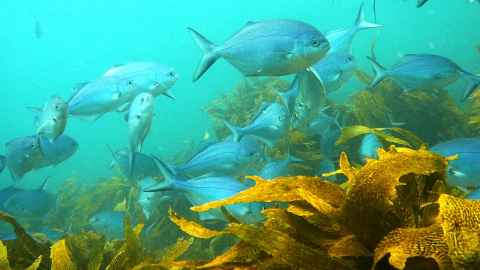Statistical ecology research
We develop new statistical methods for ecological data across a broad range of areas.

Research interests in this area range from understanding how communities of species behave and interact over time and space, to estimating abundance, and the management and conservation of species.
Estimating animal abundance
Calculating animal abundance is crucial to conservation decision making. Wildlife surveys typically detect a fraction of the individuals in a population, so estimating population size requires determining the number of animals missed. We create new methods to estimate abundance, with a focus on capture-recapture and spatial capture-recapture models.
Population dynamics
We develop models to explain and understand changes in population structure over time. We have particular expertise in fisheries stock assessment modelling, which estimates and forecasts a stock’s age and size structure to determine sustainable yields and inform stock management.
Spatiotemporal models
Our research in this area involves finding new ways to model ecological processes that change over space and time, for example, animal density, distribution, movement, and space usage. Inference about these processes can provide an understanding of how animal populations change due to effects of stressors or other stimuli.
Multispecies community models
Animal species do not live in isolation but form an ecosystem of interacting organisms. We develop novel methods for multivariate data to understand the interactions between coexisting species within a community.
Our researchers
Professor Rachel Fewster
- Estimating animal abundance
- Population dynamics
- Population genetics
- Citizen science conservation
Dr Jesse Goodman
- Approximation techniques for likelihoods of ecological models
Associate Professor Simon Harris
- Stochastic population models
- Spatial branching processes
- Multispecies coalescent processes
Professor Judi Hewitt
- Spatiotemporal models
- Biodiversity models
- Multispecies community models
- Coastal and estuarine marine ecology
Dr Charlotte Jones-Todd
- Spatiotemporal models
- Species interaction models
Professor Renate Meyer
- Population dynamics
- Survival analysis
- Data assimilation
- Copula models for multivariate data
Associate Professor Russell Millar
- Fisheries stock assessment models
- Multispecies community models
- Population dynamics
- Spatial models
Associate Professor James Russell
- Estimating animal abundance
- Population dynamics
- Conservation biology
Associate Professor Nick Shears
- Marine ecosystem models
Dr Ben Stevenson
- Estimating animal abundance and distribution
- Spatial models
Associate Professor Thomas Yee
- Statistical models for plant ecology
- Nonparametric regression models
- Ordination